It is a kind of web Software structured API Development style , Notice that it just represents a style , Does not represent a constraint 、 standard .
Try to make ⽤https agreement , send ⽤ Exclusive domain name to provide API service , And in URL⾥ mark api edition , as follows
https://api.example.com/v1
https://www.example.com/api/v1
stay RESTful Architecture , Every ⽹ Address representative ⼀ Species resources (resource), This ⽹ The contact address is URI(uniform resource identifier), Sometimes called URL(uniform resource locator). because URI Corresponding ⼀ Species resources , therefore ⾥⾯ There can't be verbs , Only nouns .⼀ In general , The tables in the database are the same kind of records " aggregate "(collection), therefore API Nouns in should also make ⽤ The plural .
https://api.example.com/v1/users
⽤ User list resource address
https://api.example.com/v1/users/{id}
⽤ Household id=5 resources . Be careful : this ⾥ yes users/5,⽽ No user/5,API Nouns in should make ⽤ The plural .⽆ On ⼦ Resources or all resources .
https://api.example.com/v1/users/{id}/articles
⽤ Household id=5 Published ⽂ Chapter list
Not RestFul Design , We used to write like this :
http://xxx.com:8080/get/getArticle ( Search article )
http://xxx.com:8080/post/addArticle ( New article )
http://xxx.com:8080/update/updateArticle ( Update article )
http://xxx.com:8080/delete/deleteArticle ( Delete articles )
RestFul Design style :
GET http://xxx.com:8080/get/articles( Search article )
POST http://xxx.com:8080/post/articles( New article )
PUT http://xxx.com:8080/update/articles( New article )
DELETE http://xxx.com:8080/dalete/articles( Delete articles )
For the specific operation type of resources , from HTTP The verb means .
often ⽤ Of HTTP The verb has the following ⾯ four ( Brackets ⾥ Is the corresponding SQL command )
GET(SELECT): Get resources from the server (⼀ Item or items ).
POST(CREATE): Create a new server ⼀ A resource .
PUT(UPDATE): Update resources on the server ( The client provides complete resources after the change ).
DELETE(DELETE): Remove resources from server .
There are three not often ⽤ Of HTTP Verb .
PATCH(UPDATE): Update on the server ( to update ) resources ( Client provides changed properties ).
HEAD: Get the metadata of the resource .
OPTIONS: pick up information , Which properties of the resource can be changed by the client .
If there are a lot of records , The server cannot return them all to ⽤ Household .API Parameters should be provided , Filter return results .
Next ⾯ yes ⼀ More often ⻅ Parameters of .
?limit=10: Specify the number of returned records
?offset=10: Specify where to start the return record .
?page=2&per_page=100: Designate the ⼏⻚, And every ⻚ Number of records .
?sortby=name&order=asc: Specifies which attribute to sort the returned results by , And sort order .
?animal_type_id=1: Specify filter criteria
Server to the ⽤ Status code and prompt information returned by the user , often ⻅ There are the following ⼀ some (⽅ In parentheses is the... Corresponding to the status code
HTTP Verb ).
200 OK - [GET]: The server successfully returned ⽤ Data requested by the user
201 CREATED - [POST/PUT/PATCH]:⽤ User successfully created or modified data .
202 Accepted - [*]: Express ⼀ A request has entered ⼊ Backstage queue ( Asynchronous task )
204 NO CONTENT - [DELETE]:⽤ User deleted data successfully .
400 INVALID REQUEST - [POST/PUT/PATCH]:⽤ There is an error in the request sent by the user , No access to the server
⾏ Create or modify data
401 Unauthorized - [*]: Express ⽤ User does not have permission ( token 、⽤ Account name 、 Wrong password ).
403 Forbidden - [*] Express ⽤ The customer is authorized ( And 401 Error relative ), But access is forbidden ⽌ Of .
404 NOT FOUND - [*]:⽤ The request sent by the user is for a non-existent record , No access to the server ⾏ operation ,
406 Not Acceptable - [GET]:⽤ The format requested by the user is not available (⽐ Such as ⽤ Customer request JSON Format , but
It's just XML Format ).
410 Gone -[GET]:⽤ The resource requested by the user is permanently deleted , And it won't come back .
422 Unprocesable entity - [POST/PUT/PATCH] When creating a ⼀ When you are an object , Hair ⽣⼀ A test
error .
500 INTERNAL SERVER ERROR - [*]: The server sends ⽣ error ,⽤ The household will ⽆ Cannot judge whether the request is
Is it successful .
If the status code is 4xx, The server should report to ⽤ The user returns an error message .⼀ In general , The information returned will be error As a key name , The error message can be used as the key value .
{
error: "Invalid API key"
}
GET /collection: Returns a list of resource objects ( Array )
GET /collection/resource: Return a single resource object
POST /collection: Return to new ⽣ Become a resource object
PUT /collection/resource: Returns the complete resource object
PATCH /collection/resource: Returns the complete resource object
DELETE /collection/resource: return ⼀ Empty ⽂ files

 [SCM framework] [host computer][python+pyside2] DFU upgrade tool (serial port upgrade +jlink burning)
[SCM framework] [host computer][python+pyside2] DFU upgrade tool (serial port upgrade +jlink burning)
Environmental Science : python
 50 lines of code using Python OpenCV to draw the thermal diagram of motion track in video
50 lines of code using Python OpenCV to draw the thermal diagram of motion track in video
One 、 Environment configuratio